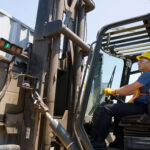In the realm of robotics, few creations capture our imagination like robotic humanoids. These remarkable machines, designed to mimic human form and movement, stand as a testament to the advancements in motion control technology. As we venture into an era where robotics and AI intertwine, the fusion of robotic humanoids and cutting-edge motion control techniques opens the gateway to unprecedented possibilities.
Robotic Humanoids: A Glimpse into Tomorrow
Robotic humanoids are more than just technological marvels; they represent the culmination of years of research and innovation. These machines are meticulously crafted to emulate human gestures, facial expressions, and even locomotion. Motion control is the magic behind the scenes that breathes life into these robots, allowing them to perform fluid and lifelike movements that were once confined to the realm of science fiction.
Robotic Automation: The Key to Realism
The journey towards lifelike robotic automation hinges on dynamic motion control. This advanced form of motion control goes beyond simply executing pre-programmed movements. Instead, it involves real-time adjustments, responding to environmental changes and user interactions. This level of control is what enables robotic humanoids to adapt their movements based on the context, creating a more natural and authentic interaction.
Kinematics and Humanoid Motion
Central to the creation of robotic humanoids is the study of kinematics – the science of motion. Kinematics allows engineers to understand how different components of a humanoid’s body move in relation to each other. By implementing inverse kinematics algorithms, robotic humanoids can determine the joint angles required to achieve a desired pose or movement, mimicking the fluidity of human motion.
Kinematics does not consider loads or forces. To achieve expected kinematic motion, high quality and accurate bearings are a must.
Balance and Stability: A Complex Achievement
Achieving balance and stability in robotic humanoids is a daunting challenge, especially considering their complex structures. Motion control strategies that focus on stabilizing the robot during walking, running, or even dancing is paramount. These strategies often involve feedback loops that constantly monitor the robot’s position and adjust its movements to prevent falls and maintain equilibrium.
Emulating Human Interaction
Robotic humanoids shine when they interact with humans in a natural and intuitive manner. Motion control technology enables these robots to replicate human gestures and reactions. From shaking hands to making eye contact, motion control algorithms ensure that the movements are not only accurate but also convey the intended emotional context.
This requires bearings with zero backlash, high rigidity, and high positional and rotational accuracy. Bearings in this application include four-point contact ball bearings, angular contact ball bearings, cross roller bearings and thin raced ball bearings.
From Entertainment to Healthcare: Versatile Applications
The applications of robotic humanoids span a wide spectrum. In entertainment, they captivate audiences with their dance routines and performances. In healthcare, they assist with rehabilitation exercises, offering personalized and interactive sessions. Even in hazardous environments, humanoid robots can replace humans, performing tasks that are too dangerous for human workers.
Future Horizons: Where Motion Control Meets Humanoids
As motion control technology continues to evolve, the future of robotic humanoids becomes even more promising. The integration of AI, machine learning, and sophisticated sensors will lead to humanoids that not only move realistically but also learn from their interactions. This could result in robots that can adapt to new scenarios, predict user preferences, and make decisions based on context.
Synergy between motion control and robotic humanoids propels us into a world where machines blur the line between fiction and reality. The intricate dance of algorithms and mechanics enables these robots to perform feats that were once relegated to dreams. As we stand at the crossroads of innovation, the path ahead is illuminated by the enchanting possibilities that arise from the fusion of robotic humanoids and motion control technology.


